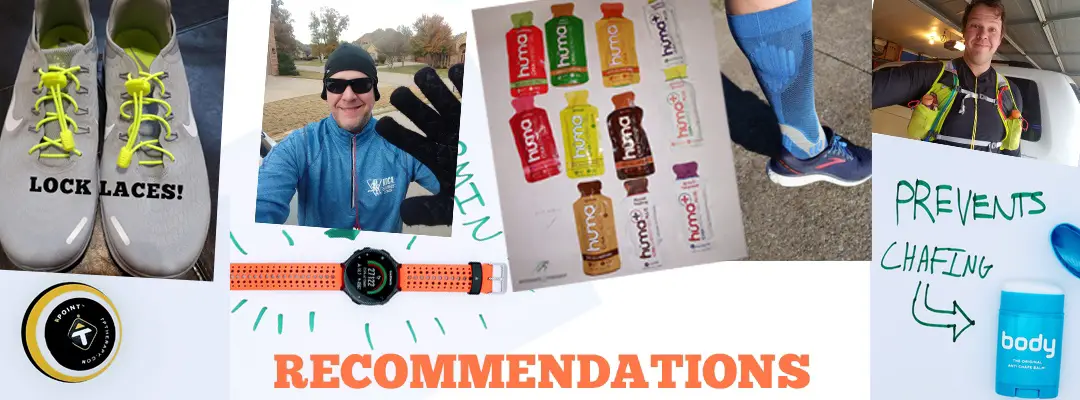You can achieve a healthier lifestyle through running. It strengthens your bones and muscles, improves cardiovascular functions, and helps maintain a healthy weight. It is a great way to stay fit, meet new people, and even participate in healthy competitions. Here are some tips you can follow to ensure you are off to a great start.
See your doctor first.
It’s best to see a doctor first if you’ve never run or have lived a sedentary lifestyle. Your doctor can tell you if you have any medical condition that would prevent you from running safely. A visit to the doctor is crucial for anyone over 40 years old, obese, or with a chronic disease.
Take it nice and slow.
The secret to running fast and far is practice and patience. Slowly increase your distance and speed. A slow walk will prevent injuries and give your body time to adjust to a new routine. Building up to regular running can take up to six weeks. Slow down and don’t rush to be fast.
Related: What is 80/20 Running. Why is it important to follow this rule?
Stay hungry for more.
Giving yourself a glimpse of what’s coming next can help boost your motivation. Finish your running session when you notice you can run longer and faster. Doing this will keep the excitement alive, and you’ll be looking forward to the next run.
Related: 8 Tips To Help New Runners Run Faster Without Injury
Implement A Run/Walk Technique
When new runners start to shuffle their feet, many tend to get discouraged and ask themselves, “why is running so hard?” The key to making running not so hard is to use a run/walk technique. In its simplest form, this means that you switch off walking with running. For example, you walk 4 minutes and then run for 1 minute at an easy pace. You repeat this over and over again until your total running time is completed.
Here are some perfect posts for runners wanting to start a training plan but note quite ready for 5k training:
- How to use walk/run interval training to start running
- How to run 1 mile when you’re out of shape (complete free plan – no sign-up)!
Play your favorite tunes.
Listening to music while running can get you pumped up. You will have more fun running when you are distracted from the reasons why you dread exercise. Music can also help pace your breathing and avoid fatigue, allowing you to run for longer.
Do you need a decent pair of earbuds that won’t fall out? Check out Earbuds That Won’t Fall Out When You Run.
Set realistic goals.
Not accomplishing your goals will quickly discourage you. The best way to achieve goals is by having a realistic plan in mind. Take short walks at first and increase time, distance, and speed every week. It is more motivating to accomplish small goals consistently than a large one once in a while.
Find running buddies.
It’s incredible how much motivation you can receive from your running partner or, better yet, from a whole running group. If you don’t know anyone who runs, you can find Facebook groups for runners almost anywhere. They can help you progress faster by sharing valuable experiences.
Related: 12 Ideal Qualities To Look For In A Running Buddy!
Don’t run on a full stomach.
Exercise can be strenuous after eating certain foods, in particular greasy foods. You can also experience nausea and pain. Have a light snack, such as bananas or granola bars, if you need to eat something before running.
What are some of the best foods for runners? Find out here –> What are the best superfoods for runners?
Warm-up and stretch.
Warming up and stretching before exercising stimulates your metabolism and blood circulation, which improves your endurance. You also reduce your chances of injuring yourself by moving your joints and muscles. Stretching again after running will also prevent this. Always warm up with about 5-10 minutes of walking or extremely light, slow jogging. Perform anywhere from 3-4 dynamic stretches. For a detailed post on great dynamic stretches for runners. Check out: What types of stretches should runners do? Includes cool-down static stretching as well.
Here are the best post-run static stretches to perform after a run.
Practice your breathing.
Breathing gives your body enough oxygen and makes it more resistant to fatigue. Taking a deep breath through your nose and mouth will help your body to relax. By breathing deeply into your stomach, you make better use of the entire lung volume and avoid side stitching.
Related: Click here for a deep dive on side cramps/stitches and how to prevent them
Find a good running technique.
Every person will have a different running technique. A few general guidelines for running include:
- maintaining an upright posture,
- keeping your buttocks and abdominal muscles tense,
- using your arms to perform rhythmic running,
- keeping your shoulders relaxed, and
- placing your feet under your body.
If you feel pain, that’s your body telling you it’s time to change your style.
Related: Proper Running Form
Drink water and replace electrolytes.
When exercising, it is essential to drink enough water, but too much water can impair performance. A glass of water about five minutes before you start running is enough if you’re going for a short walk. If you run long distances or marathons, it’s a good idea to use a hydration pack or a hydration belt so that your body gets enough fluid in small amounts.
Allow enough time to recover.
Muscles need to rest and prepare for your next run. Alternate running and rest days to reduce the risk of injury; it is essential to rest at least two days each week. You can gradually increase your training days as you progress.
Related: Should Beginner Runners Run Every Day?
Related: What Is A Recovery Run?
Plan your route.
You should always be aware of your surroundings when running. Keep an ear out for traffic sounds and potential hazards. To reduce the risk of injury, choose flat, grassy areas over hard or loose surfaces (such as sand).
Related: Why New Runners Quit – Avoid These 15 Mistakes At All Costs!
Look for clean air.
Our health is always compromised by air pollution, but some places, like roads, are even worse. You can develop various respiratory and cardiovascular complaints due to vehicle exhaust fumes. Run in the morning or evening to avoid traffic and inhaling air pollution from vehicles.
Dress properly.
Dress appropriately for cold and warm weather. Choose fabrics that swiftly dry and wick sweat away from your skin. Clothes with athletic cuts are easier to move in. It would help if you had good socks to prevent chafing or discomfort while running. Ladies, be sure your sports bras offer enough support and allow your skin to breathe.
Related: Why Do I Sweat So Much When I Run? How Much Is Too Much Sweat?
Buy a comfortable running shoe.
Get help from a running shoe expert in a specialized sports store. They will analyze your feet and make recommendations. You can also size up, so your toes do not hit the front of the shoe when you are running. If you want to avoid lower leg injuries, opt for comfort over style.
Keep a training log.
A training log will help you see trends on how long it takes you to recover from a long run, injury risk, and improvements. It keeps you on track and helps you accomplish your goals.
Related: 20 Benefits Of Running 3 Times A Week – Your Key To A Healthier Life!
Take on a few runner-friendly workouts.
Some weight training exercises can boost your speed and strength. Swimming, elliptical, cycling, and rowing are great low-impact cardio exercises that help you stay in shape, improve your cardio, and prevent injuries. Cross-training will help keep your cardiovascular system up while working non-running muscles. Here is a list of the best cross-training exercises for runners.
Mix up your routes.
Running on a new park or path keeps boredom at bay. If you want to maintain interest and enthusiasm, find a scenery where you enjoy spending time. Wouldn’t it be nice to run along the shore or go on a hike if you can?
Understand why you run.
Have a clear vision of what your main goal is, whether it is losing weight, running your first marathon, or just improving your cardiovascular health. Knowing why you run will keep you motivated if you ever start to lose interest.
Understanding why you run will save you on the days that you absolutely do not want to run! Check out this detailed post about what to do if you lose your why and running mojo.
Related: 12 Health Benefits Of Running You Shouldn’t Ignore!
Be patient.
Improving your ability to run long distances and fast takes time, diligence, and patience. You’re not going to run a marathon after a week of practice. But you can do it if you focus and don’t give up.
Related: How Long Does It Take To Become A Runner?
If you follow these tips, you will be off to a great start. Happy running!
Related: Best Stationary Cross-Training Stationary Bikes For Runners
Related: Absolute Beginner’s FAQ to Running
Related: How To Run Safely At Night
| Help support me and subscribe to my YouTube channel. YouTube video - 30 ways to make your runs less painful! Coach Scott's Credentials:
|
To sign up for a FREE half marathon training schedule, log sheet, and pace predictor CLICK HERE.

Recommended gear for runners
Connect with me:
| facebook.com/BeginnerToFinisher/ |
References
https://www.on-running.com/en-ca/articles/performance-running-tips-for-beginners
https://www.nyrr.org/Run/Photos-And-Stories/2021/Training-resource-Ask-a-Coach-Shoes
https://www.runnersworld.com/training/a20843881/11-tips-for-new-runners/
https://www.betterhealth.vic.gov.au/health/healthyliving/running-and-jogging-health-benefits



11 thoughts on “22 Running Tips For Absolute Beginners”